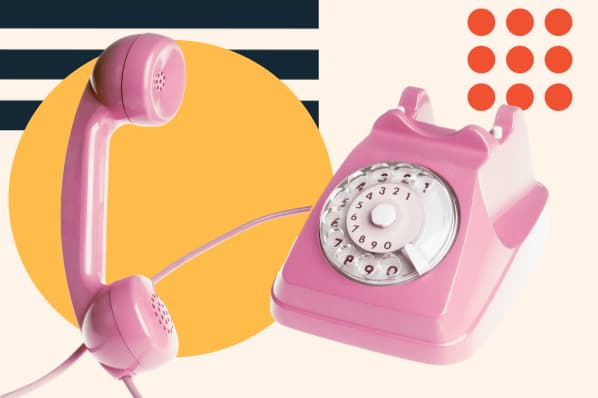7 Crucial (but Common) Sales Mistakes to Avoid in 2025
1. Leaning too Hard on Cognitive Biases and Scarcity Language
Bryan Vasquez, Head of Sales at LinkBuilder.io, says, "When it comes to B2B SaaS sales, too much focus on cognitive biases — such as urgency plays, scarcity techniques, or social proof manipulation — can backfire fast. When sales professionals leverage these psychological shortcuts to induce pressure, it definitely damages trust.
"We‘ve witnessed deals go stagnant or completely fall apart when prospects realize they’re being nudged and not informed. For instance, if you use scarcity language such as ‘only a few spots left’ or ‘this price expires today,’ while that might work in B2C, in B2B where there are multiple stakeholders making decisions together, it is gimmicky and typically a sign of desperation.
"We‘ve instead found that aligning with the buyer’s process and providing insight-driven guidance builds long-term credibility. Higher conversions come from performance selling — taking the customer through return on investment, impact of integration, and real use cases for their business.
“In fact, we increased our win rate by 20% over two quarters by replacing urgency-based CTAs with data-backed proposals and tailored value maps. The takeaway here is that SaaS sales aren't built on gimmicks that skim the surface of psychology; they thrive on transparency and value — along with good, old-fashioned hard work. The fit of the product and the strength of the relationship should do most of the work!”
2. Rushing to Pitch Before Establishing a Connection
Nitesh Gupta, Founding Member of Concurate, says, "I once watched a sales rep send over a pitch deck two minutes into a call. The buyer had barely finished explaining their problem. You could feel the tone shift. They nodded politely, but mentally, the call was over!
"That‘s the trap I see — rushing to pitch before there’s any real connection. Especially when reps rely on pre-made assets like case studies or one-pagers to ‘do the convincing.’
"We helped a client slow things down. Instead of leading with content, they started by asking better questions. Then, when the moment felt right, they'd share a short story, not a sales pitch, but something about how someone in a similar role tackled the same challenge.
“The result? Way more back-and-forth. Prospects felt heard. And deals moved forward without the push. Sometimes, the worst tactic is just bad timing, disguised as enthusiasm.”
3. Focusing on What You‘re Selling More Than a Prospect’s Needs
Steve Farmiloe, Director of Channel Sales at TPx Communications, says, "B2B SaaS sales professionals often focus on what they have to sell instead of what the customer's needs are. This is the biggest mistake they can make. Just assume that you have a full medicine cabinet with literally every prescription or technology that the customer might need.
“99% of your focus needs to be on discovering what the business objectives are for your customer. Can you imagine going to a doctor who just starts launching into all the new prescriptions they can prescribe? Instead, a good doctor listens, asks probing questions, and listens more before they even begin to prescribe. Sales professionals need to do the same.”
4. Ignoring the Decision-Making Unit
Spencer Romenco, Chief Growth Strategist at Growth Spurt, says, "Ignoring the decision-making unit is one of the biggest reasons deals fall apart. These decisions are rarely made by one person.
"Even if a contact is leading discussions, there‘s usually a group behind them involved in the approval process — people from IT, finance, legal, and procurement all weighing in at different stages. If those people aren’t part of the conversation early, the risk of internal objections grows.
“Deals stall, priorities shift, and the opportunity disappears without much warning. It's not because the product didn't make sense, but because someone important was left out.”
5. Pushing a One-Size-Fits-All Solution
Louis Balla, CRO of Nuage, says, "One ineffective sales tactic to avoid is pushing a one-size-fits-all solution. I've seen teams fail when they focus solely on selling a specific product without understanding the unique needs of each business.
“At Nuage, we've dedicated ourselves to tailoring ERP solutions to match client requirements, and this customized approach consistently leads to higher satisfaction and retention rates.”
6. Rushing Into Demos too Early
Alex Bilytskyi, Founder and CEO of Amploo, says, "One hard lesson I learned had to do with rushing into demos too early. I used to think, ‘Let’s just show them how cool this is,' but people felt overwhelmed or even confused. The shift happened when we started asking better questions before offering any kind of pitch — not just qualification checkboxes, but actual conversations."
7. Over-Focusing on the Final Stages of the Buyer's Journey
Ryan T. Murphy, Sales Operations Manager at Upfront Operations, says, "Over-focusing on the final stages of the customer journey without nurturing leads through the awareness and consideration stages often results in lost sales.
“At UpfrontOps, we've seen the value of providing educational content early in the buyer’s journey to inform and engage prospects before they’re ready to decide. Neglecting this can lead to a disconnect with potential customers and missed opportunities for conversion.”
As I mentioned at the top of this post, no one bats 1.000 in sales. You're bound to slip up at some point. Still, hopefully, this article can give you perspective on some common (but more under-the-radar) mistakes you can run into from time to time.



![Sales Close Plan: The Best Tool to Close Way More Deals [Template]](https://53.fs1.hubspotusercontent-na1.net/hubfs/53/sales-close-plan-1-20241125-8524726.webp)


![How Close Rates are Shifting in 2024 [New Data]](https://53.fs1.hubspotusercontent-na1.net/hubfs/53/close-rate.webp)
![Sales Pros Say This Tool is Key to Driving Sales: How to Close More Deals With It [Data]](https://53.fs1.hubspotusercontent-na1.net/hubfs/53/85_Best-Sales-Strategies.png)



